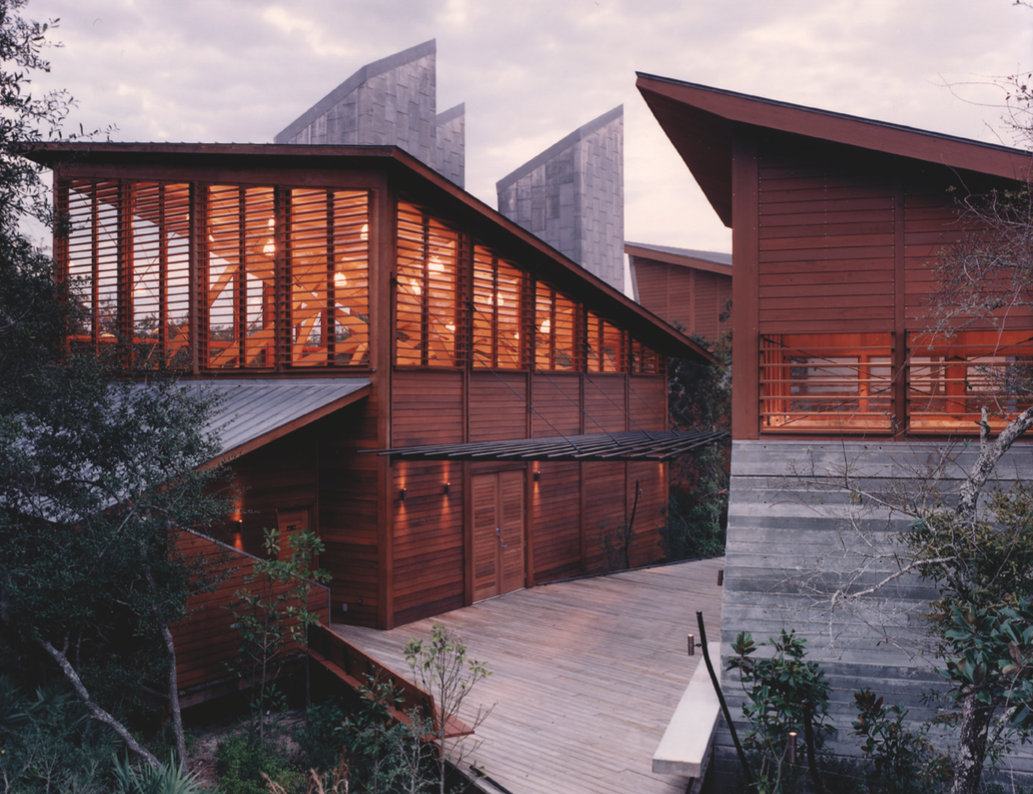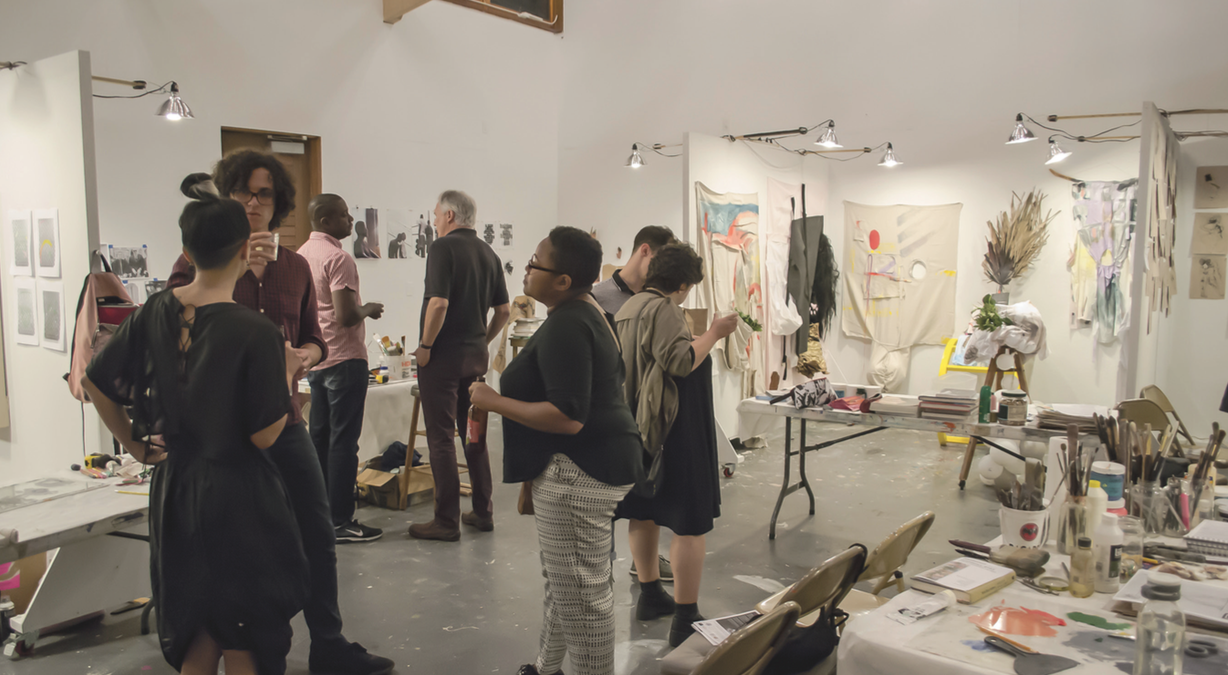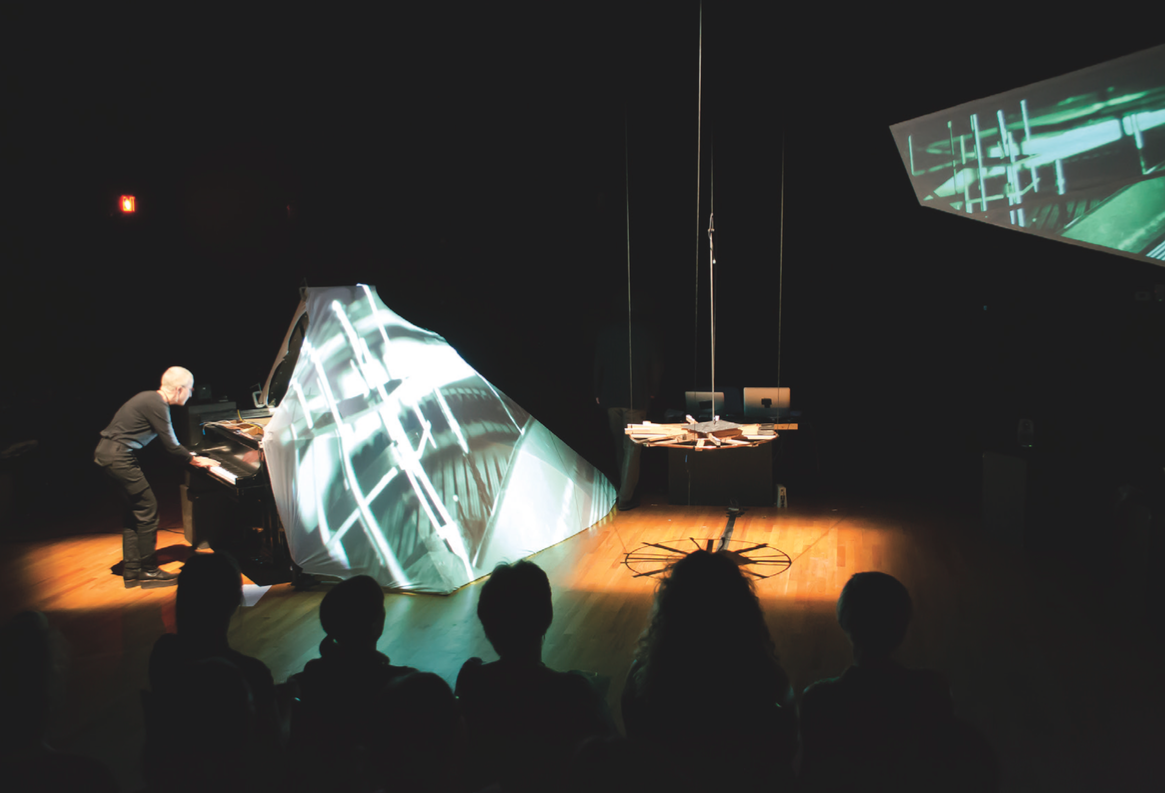The type of curating that happens at Atlantic Center for the Arts is quite different from the type most are familiar within the art world, where a curator selects and works on a presentation for an exhibition in the “white cube.” The word curate, as a verb, can be found at work at ACA, but before discussing this in depth, I believe an overview of Atlantic Center for the Arts and how it operates will facilitate people’s understanding of how curate functions at our establishment.

ACA studio complex, photo by Chuck Choi
ACA is an artist-in-residency program founded in 1977 in New Smyrna Beach by Doris Leeper. Our core mission is to provide artists time and space for reflection, research, presentation, production, interdisciplinary interaction, and collaboration. Each year, ACA organizes four residencies, each lasting for a period of three weeks. The residencies are led by three invited artists who are prominent figures in today’s art culture, and work in various disciplines such as visual arts, music, literature, and performing arts—we call them “Master Artists.” We have an open call online, with a set deadline established for people who would like to be under the mentorship of one of the three Master Artists assigned for that specific residency. Each Master Artist selects eight applicants from the pool of submissions. Upon acceptance, the applicants are then given the title of Associate Artist, making a total of 24 Associate Artists per residency. As an associate, you are not expected to create a final project—the emphasis is on the process.
One of the definitions of curate is “to pull together,” which the ACA does initially when inviting Master Artists to our residency. The residencies are planned one to two years out, with time spent researching potential Master Artists that our National Council (artistic advisory board) recommends. The council looks at their past work and history—curriculum vitae, statements, online presence, recommendations, and reviews—to see if they would be a good fit for our residency program. Not only do we look at the artist’s accomplishments relative to our culture, but we also look for artists who communicate ideas clearly, have polished social skills, a passion for mentorship, and are of interest to potential applicants. This is one of the aspects of the evolution of each residency that is interesting; it just falls into place. It is often a serendipitous process, but because of our set criteria, the Master Artists we have approached over the years have created a highly successful residency program.
Another definition of curate is “to select.” Most residency programs have a committee that selects who will attend a residency and assign who goes with who; at ACA, the Master Artist is assigned the sole responsibility of selecting their eight Associate Artists. The Master Artist is curating their own experience based on applicants’ work, ideas, and discussions that are generated with the art submitted with their application—they have full ownership of the experience they create. Each Master Artist’s criteria varies from residency to residency; some select based on work only, while others are also influenced by intent, artist statements, and bios. There have also been criteria inclusive to artists dealing in more niche areas regarding things like fiction, prose, feminism, identity, electroacoustic music, and so forth. Once the artists have begun the residency, there is no set plan or formula, other than the fact that they are required to spend two hours a day with their group. The rest is left it is up to the Master Artist and the group to decide.

photo by Ivan Riascos
What is so fascinating, though, is that unlike an exhibit of artwork that has been curated to hang or be displayed in a gallery to create thought, discussion, or a narrative, we have the human factor in our selection. Humans are an incredible variable; as an organization, we witness the chaos theory in effect. Chaos theory deals with nonlinear things that are impossible to predict the outcome of, and mirroring this, no two residencies at ACA are alike. I have witnessed one residency where all the artists from different disciplines came together, collaborated, and to this day are still communicating with each other. I have also witnessed the complete opposite, where the artists of a specific discipline remained more isolated and focused on individual work throughout the entire residency, only making a few connections. Both can yield exceptional results in their own ways, and one outcome isn’t necessarily more successful than the other.
It’s interesting to continually witness a group of strangers meeting for the first time, with the only commonality being their field of study, and by the end of the third week, see the unique bond that has formed. To hear how each residency has been a life-changing experience or has impacted their art process in a positive way from so many grateful Associates and Master Artists is, to say the least, encouraging. The public can witness this process firsthand, several times during each residency. These outreaches include Master Artist talks at various venues in the Central Florida area. Also, on the last Thursday of each residency, ACA has a program that is free and open to the public called “INsideOUT.” This program is like an open house, giving the public the opportunity to see, hear, and talk to the Associates and Master Artists. These events enrich both the public community and the residents, as they discuss their work and process.

Atlantic Center for the Arts’ Residency Program has been the catalyst for ongoing dialogues and collaborations that are still being developed long after the residencies have ended, impacting the arts and culture for future generations. With a top reputation in the international art world, and stemming from two processes at work, ACA has a successful program and formula with the ideal and intended end result: art.
For more information about ACA, visit: atlanticcenterforthearts.org

I have had the great and unbelievably selfish pleasure of having been at residency at ACA three times, and I can echo what was only suggested in your article: it is lifechanging. I wouldn’t have a career as a playwright without the lessons learned during my stay, and it’s partially due to that implied curation … nobody actually tells you that the best resource might not be your master artist, but instead could be the room full of crazy musicians across the campus, some of whom could end up collaborating with you for 20 years. Nobody says, have a talent show for each other so your mind can expand to these new ideas, but you end up doing exactly that. The privilege of spending three weeks focused on your work is an alien concept to most artists when they arrive, but some leave as very different people.